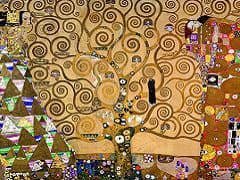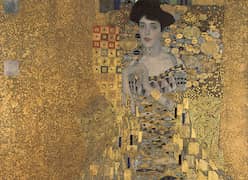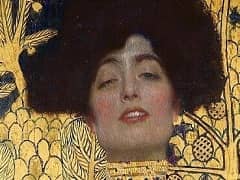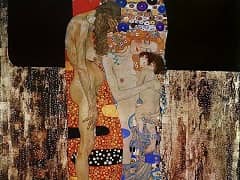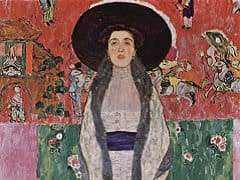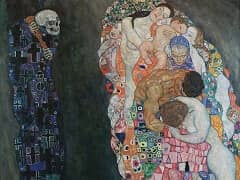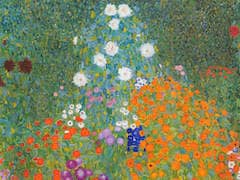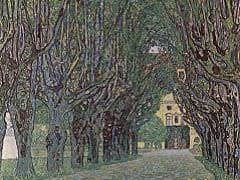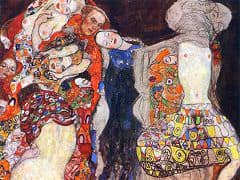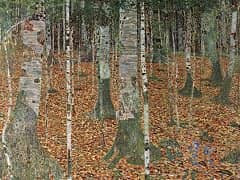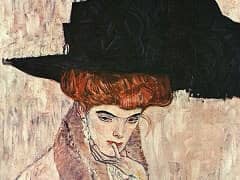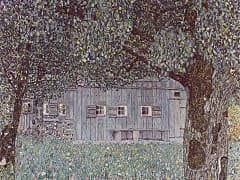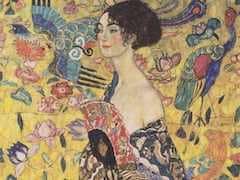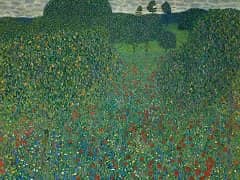Expectation, 1905 by Gustav Klimt
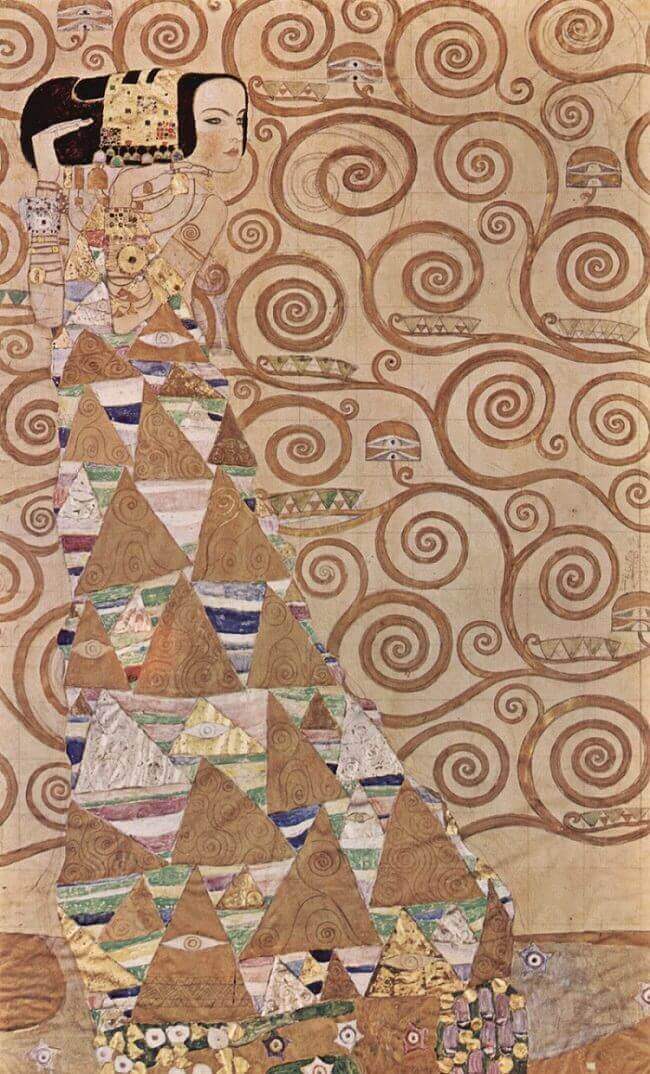
The Palais Stoclet in Brussels was built by Josef Hoffmann between 1905 and 1911. Its owner, the banker Adolphe Stoclet, had encountered Hoffmann and his work during the years he and his wife lived in Vienna, The building is a triumphant
example of the ideals of the Vienna Workshop. Exterior and interior, furniture and decoration are fused in a way that had not been possible elsewhere. Hoffmann used the word 'Gesamtkunstwerk', which translate as 'the total work of art',
or 'artistic synthesis', to describe his goal, and Klimt's frieze for the dinning room admirably illustrates the point.
He produced a life-sized working drawing on tracing paper which was attached to the marble plates. The pencil marks were then transferred onto the stone. Several craftsmen - gilders, marble workers and enamellers - collaborated on the
project, assembling the frieze in the mosaic workshop of Leopold Forstner, following Klimt's detailed instructions about colours and materials. Like the Beethoven Frieze, the Stoclet Frieze runs around three sides of the room. A tree of
life, with ornamental spiraling branches, decorated each of the opposite walls which are identical but for the figures on either side: Expectations, originally called 'The Dancer', and Fulfillment
originally called 'Embrace'. On the end wall was a third mosaic panel, apparently abstract, which has recently been identified as a knight. It is a much freer and more imaginative image than the knight of the Beethoven Frieze but
probably carries the same symbolic associations. The figure of Expectation is clearly inspired by Egyptian art, both in terms of the woman's profile and the position of her arms and hands. The figure also owes something to a dance
popular at the time.


